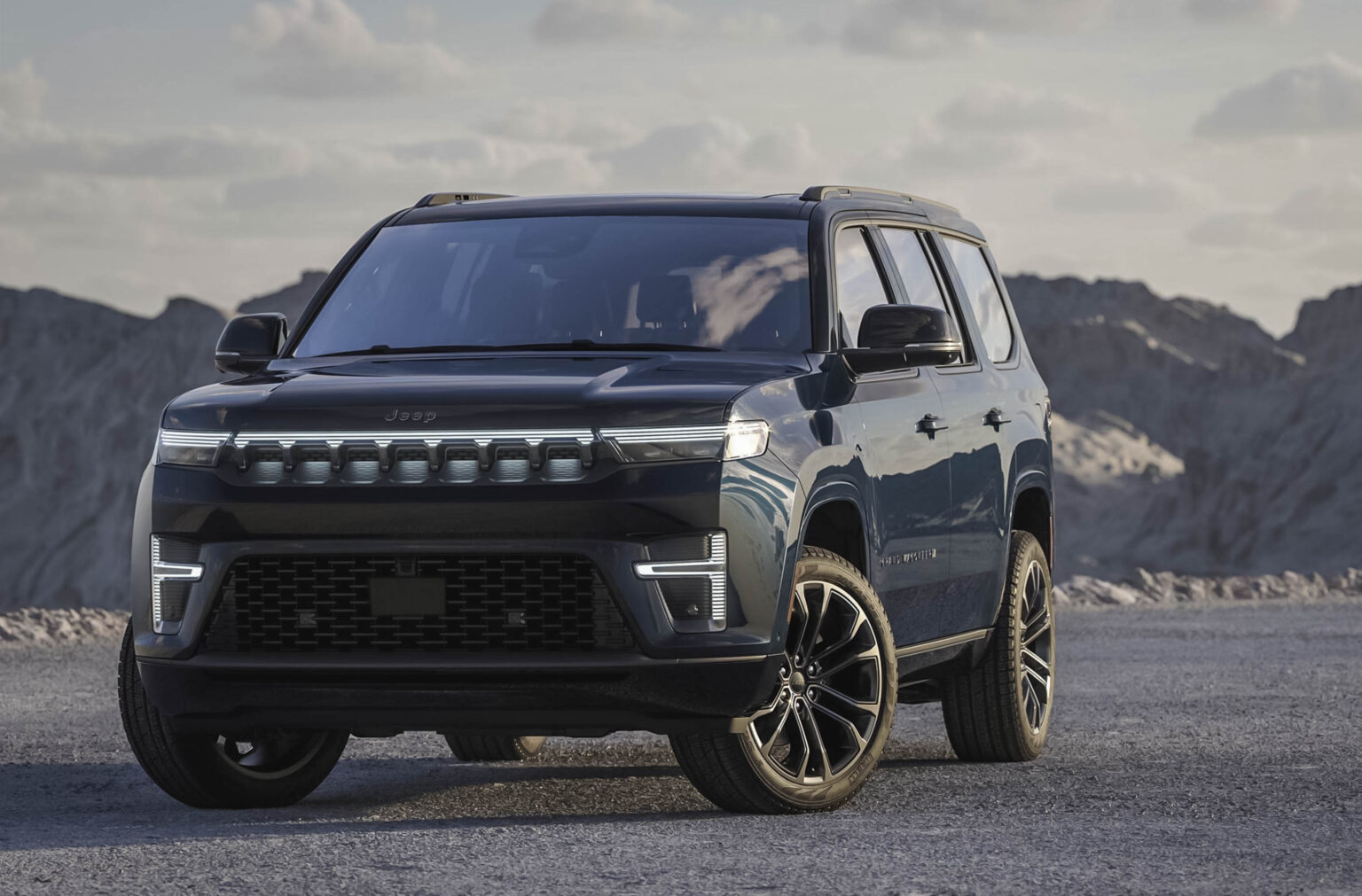When Jeep brought back the long-lamented Wagoneer badge back in 2022, it expected to have a big hit on its hands. But things didn’t go quite as planned. Now, after some soul-searching, a new naming strategy, and a big price cut, the 2026 Jeep Grand Wagoneer could finally be what was hoped for. Especially so with a first-of-its-kind, 647-horsepower range-extending drivetrain.
Jeep had big hopes riding on the revival of the Wagoneer lineup after a decades-long absence, positioning it as the launch of a new and more exclusive sub-brand. However, things didn’t work out quite as planned. The big SUV created a fair share of market confusion and fell well short of sales expectations.
It’s Officially a Jeep
The Stellantis off-road division wants to set things straight for 2026, among other things, doing away with the Wagoneer/Grand Wagoneer duality and making it clear that, yes, this is a Jeep. Going forward, we will solely get the Jeep Grand Wagoneer. Pricing has also been realigned, with the base trim starting at $65,000, including delivery fees.
A modest, midcycle design update is meant to give Grand Wagoneer a “more high-tech, more rugged” look, suggested Jeep design chief Vince Galante. But what is arguably the most significant news for the 2026 model year is the launch of the new REEV drivetrain package.

Jeep REEV
Those four letters stand for “Range-Extended Electric Vehicle,” though some other manufacturers reverse the order and prefer E-REV, for “Extended-Range Electric Vehicle. Whichever way you want to spell it, it’s a technology you’ll likely be seeing a lot more of across the industry in the near future, especially on large vehicles where meeting range and towing needs using battery power alone can be difficult.
If you’re familiar with the Jeep lineup, you know that the automaker already offers the 4xe system on several models, starting with the Wrangler. That’s a conventional plug-in hybrid system combining an internal combustion engine with battery-driven electric motors.
It can be used in all-electric mode, but the range with the Grand Cherokee 4xe is a modest 25 miles. In most situations, the system functions like a hybrid, adding a bit more power and improving fuel economy.
The Jeep REEV system also pairs an internal combustion engine with electric motors. But where PHEVs like the 4xe models can send torque to the wheels from either power source, not so the REEV. Jeep’s range-extender system is, at its heart, a battery-electric vehicle.
The wheels on the Grand Wagoneer REEV are always and only spun by its electric motors. The gas engine solely serves as a generator, whether to recharge drained batteries or add more current under high load demands.
There’s another subtle difference between a REEV and a PHEV, explained Stellantis global powertrain chief Micky Bly. Because a range-extender’s internal combustion engine only serves as a generator, it can operate at a relatively steady speed in the rpm “sweet spot” ensuring maximum efficiency.
In turn, that means some of the emissions control technology used in a PHEV or all-gas vehicle can be eliminated, as can the transmission, reducing production costs and simplifying maintenance.
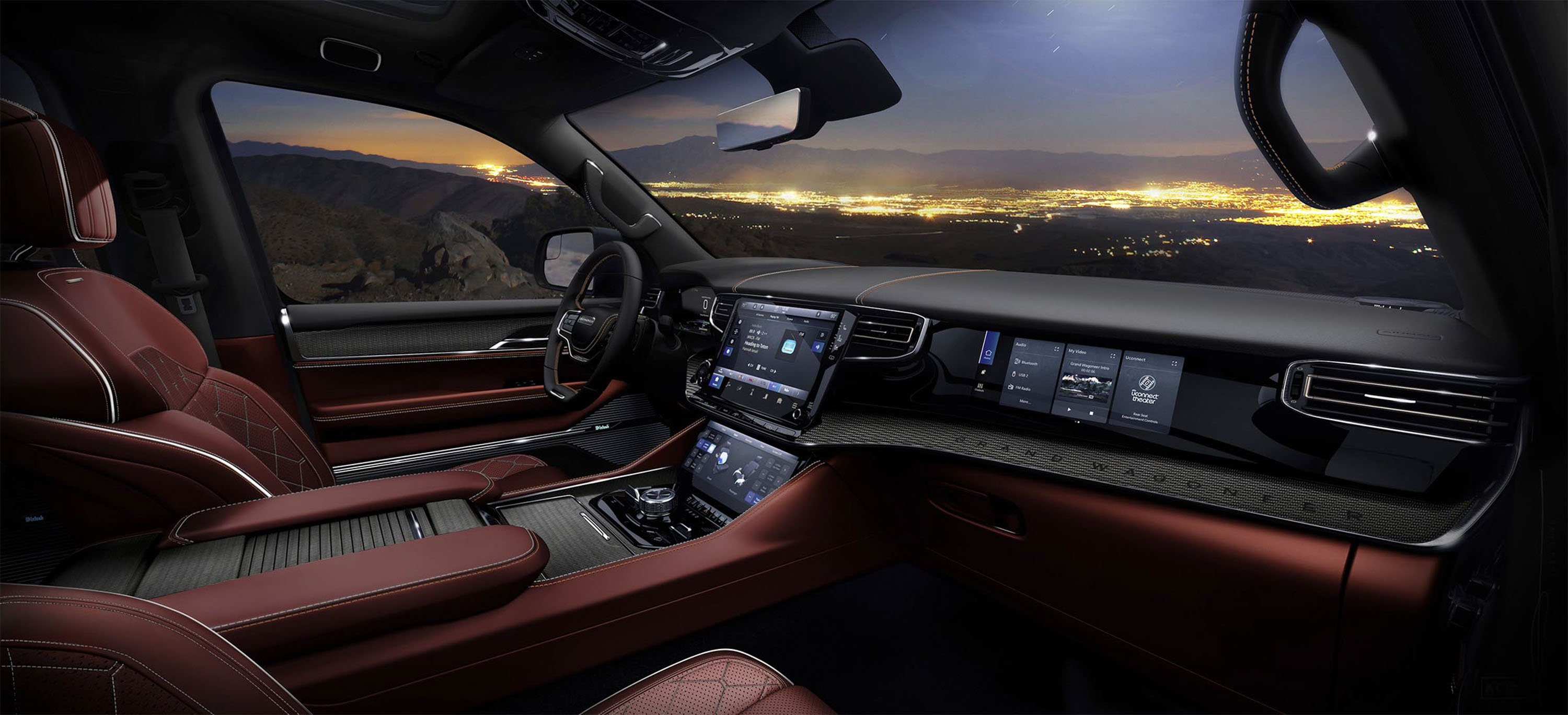
It All Adds Up
There are a number of advantages to this approach. To start with, the bigger motors used for the Grand Wagoneer REEV punch out a whopping 647 horsepower and 620 pound-feet of torque.
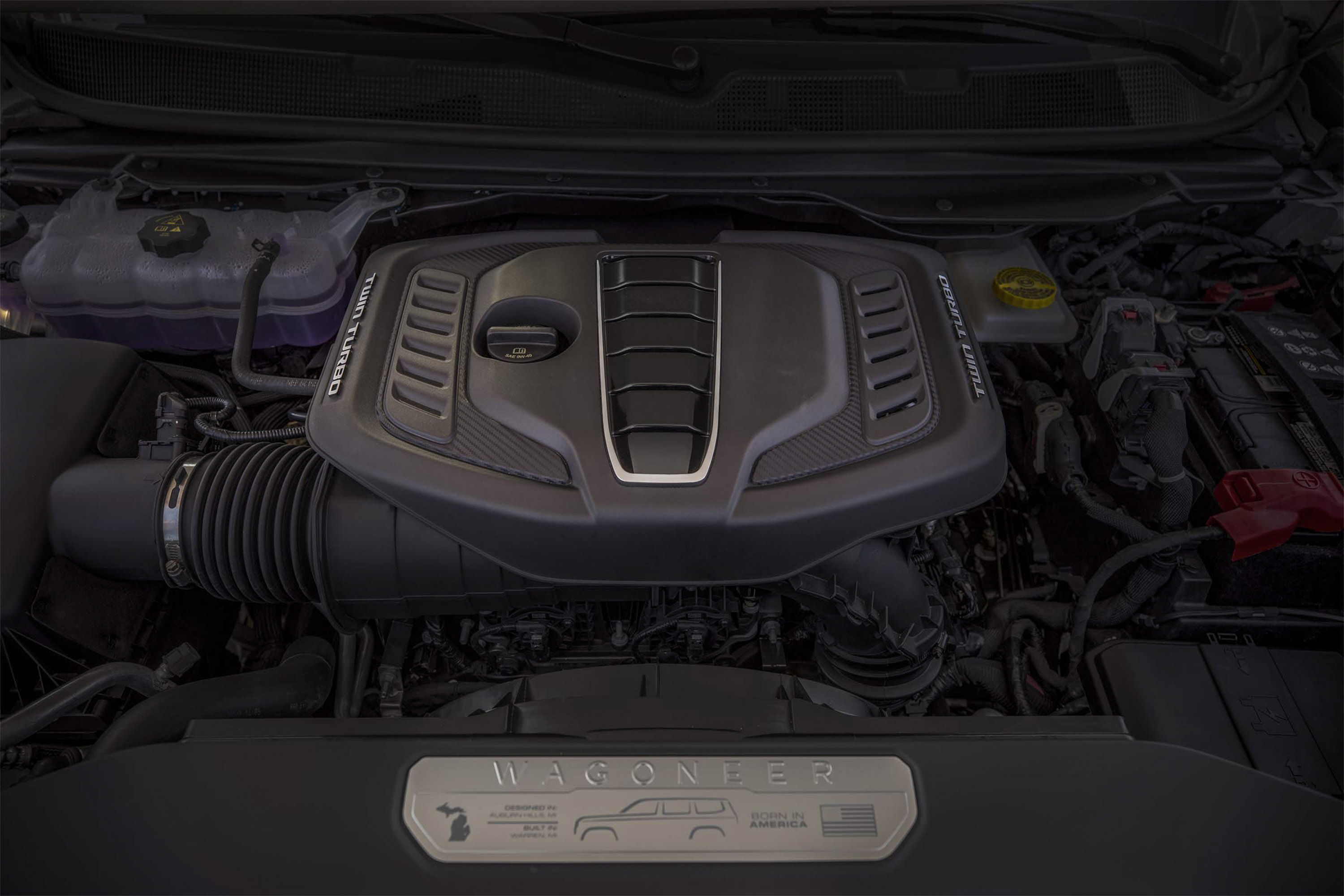
The reasonably beefy gas-only model’s 3.0Lr Hurricane Twin-Turbo option comes in at “only” 420 horsepower and 468 pound-feet — though that’s still enough to muster up to a 10,000-pound tow rating, depending upon vehicle configuration.
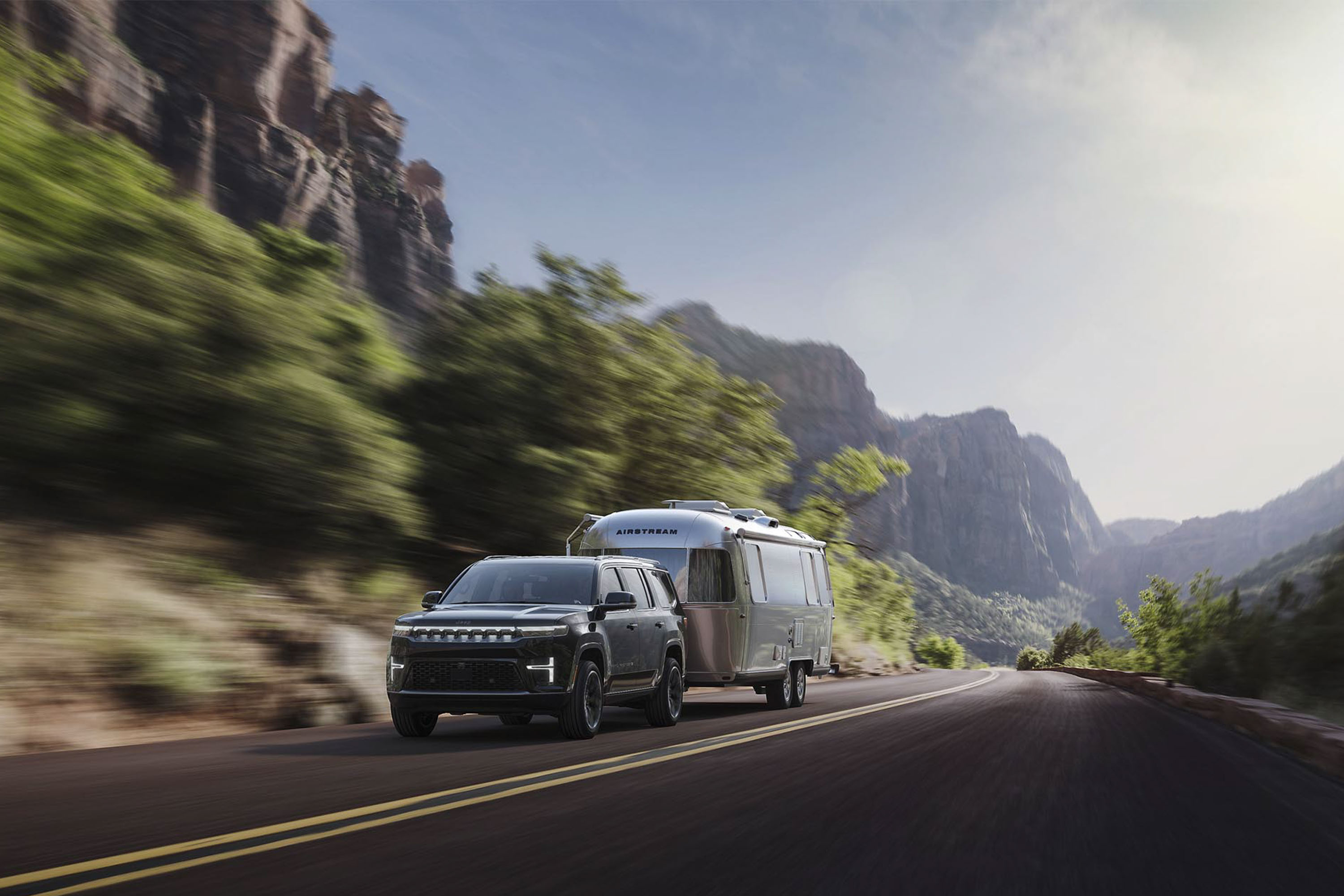
The numbers don’t fully tell the story, though. Like any EV, those motors deliver essentially all of their torque the moment they start spinning, which means that, despite the hefty size of the 2026 Grand Wagoneer and its 92-kWh lithium-ion battery pack, Jeep promises 0-60 launches of 5.0 seconds.
Final calibrations aren’t complete, cautioned Bly, but he expects the Grand Wagoneer REEV will “probably” get about 150 miles in all-electric mode, more than enough for most motorists to get a few days of commuting in before they have to plug in for a recharge. Then again, he noted, they could just run in gas-only mode. A fully charged battery and a full, 20-gallon tank of gasoline should yield around 500 miles of range when EPA estimates are formalized.
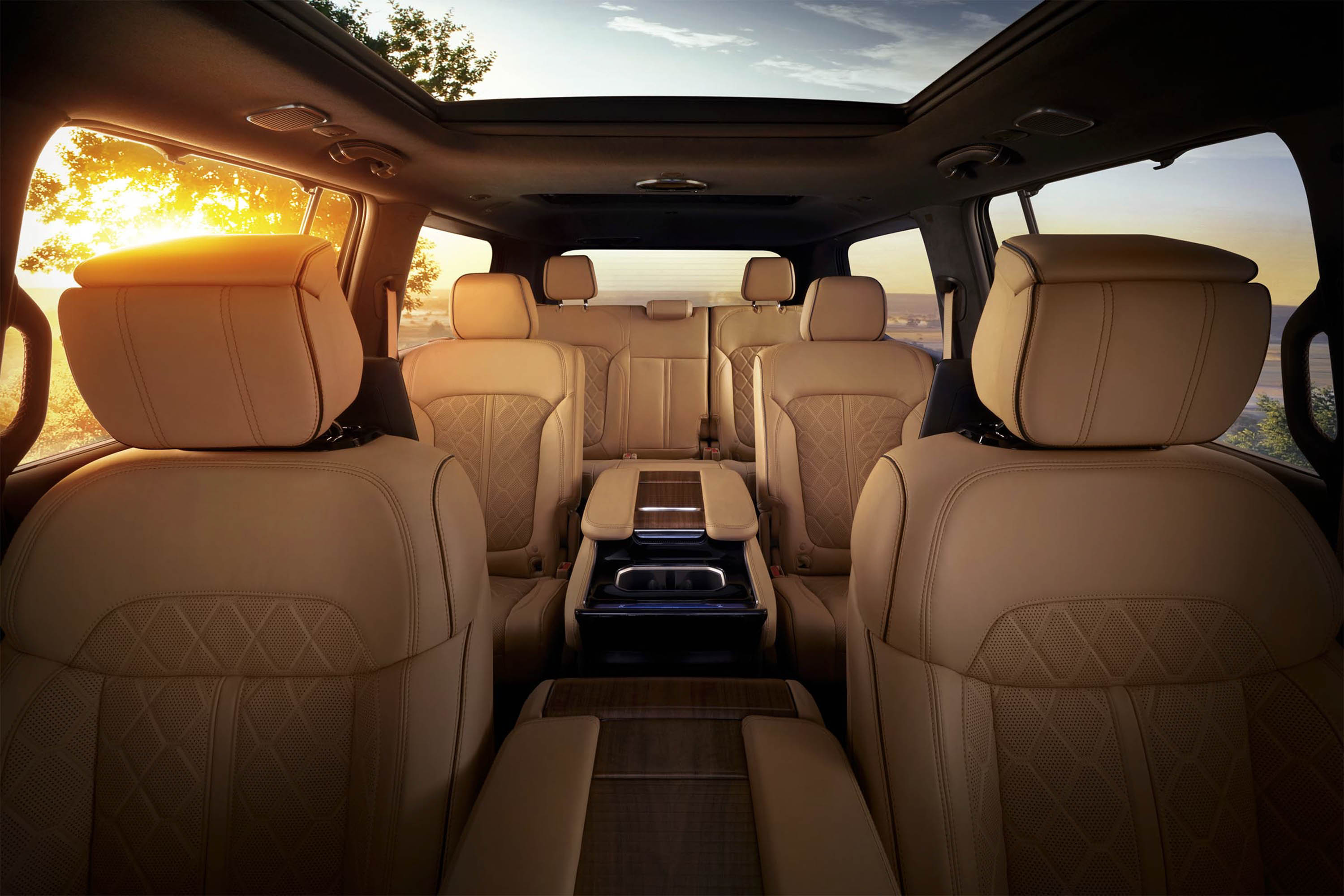
Grand Wagoneer REEV Charging
Grand Wagoneer REEV uses a 400V electrical architecture, which isn’t itself necessarily state-of-the-art, so that battery pack won’t be ultra-fast when using a public quick charger, but it won’t necessarily need to be.
Final numbers have yet to be released, but based on the size of the pack and what pure EVs offer, it’s likely that going from a 10% to an 80% state-of-charge will take somewhere under an hour, depending upon the power rating of the DC charger.
In reality, most REEV owners will likely charge up at home or office. If the battery pack does run down while on the road they’ll simply rely on gas to keep going. Indeed, said Bly, “You never have to plug it in, if you don’t want to.” Alternatively, the system has several operating modes, including one that can be used to charge a drained battery without plugging in.

What (Else) Is New for 2026
The Wagoneer/Grand Wagoneer family originally debuted sans “Jeep” badge, the automaker seeing an opportunity to create a distinct sub-brand. It also offered both Wagoneer and Grand Wagoneer packages which, Jeep VP Bob Broderdorf acknowledged, simply confused everyone.
So, for 2026, they’ve adopted “a new ‘Grand’ plan,” the Jeep badge prominently making its return, and with all models badged Grand Wagoneer. “The overall trim walk-up also has been simplified,” said Broderdorf. Noting, “This makes the nameplate easier to understand.”
There remain both standard and extended-wheelbase models, all getting variations of the new front end with revised LED headlamps and an updated take on Jeep’s iconic seven-slot grille. The hood is “much more aggressive,” said Galante, giving it “much more (of) a presence on the road.”

There are modest tweaks to the onboard technology, most notably including a larger head-up display that projects its image further down the road, making it easier to read. Depending upon the trim, Grand Wagoneer buyers with a keen interest in music can also get a 23-speaker McIntosh audio system.
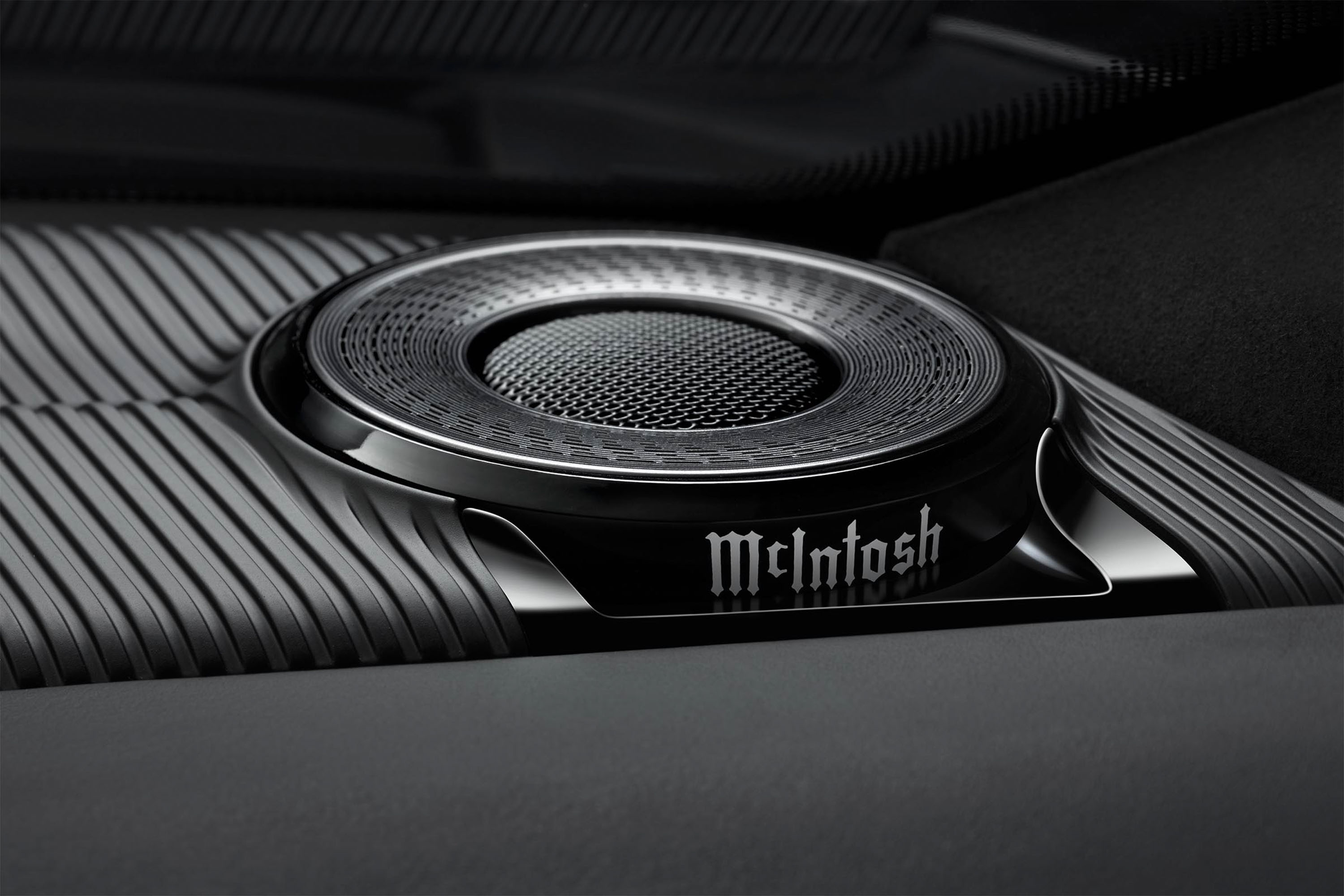
2026 Jeep Grand Wagoneer Pricing
When the big SUV’s lineup debuted a little more than 3 years ago, the Wagoneer came in at $57,995 for its base trim, pushing up toward $80,000 fully loaded and with all-wheel drive. The 2022 Jeep Grand Wagoneer started at $86,995 and topped out at around $104,000, before options.
The automaker announced big price cuts earlier this year and, as it hoped for, buyers did respond. This helped Jeep report its first increase in third-quarter sales in a couple of years.
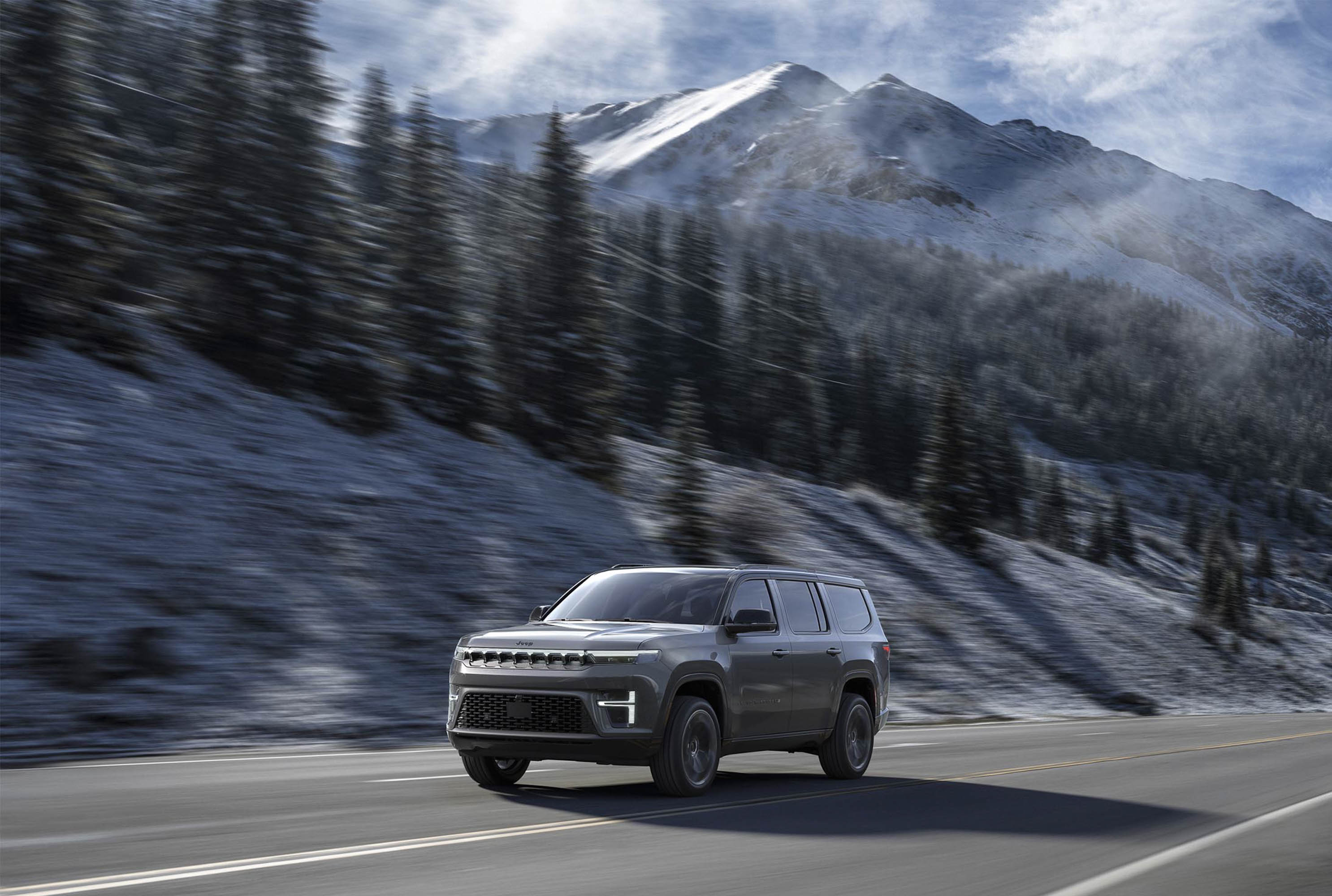
For 2026, the realigned lineup starts with an MSRP of $62,145 — before delivery fees — for a 4×2 version of the base, standard-wheelbase Grand Wagoneer. The 4×4 package adds $3,000. At the upper end, the short Summit Obsidian trim starts at $93,390, with the stretch package coming in at $3,000 more. Summit models only come in all-wheel drive.
Pricing for the Grand Wagoneer REEV packages will be released at a later date; sales are not expected to begin until “just after the first quarter” of 2026, according to Broderdorf.
Read the full article here



